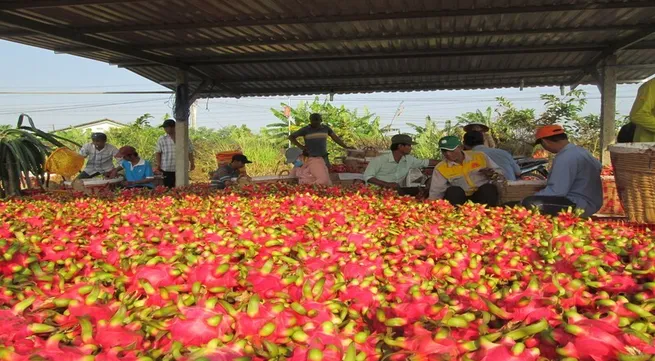Fostering agricultural exports to the EU

In the first four months of 2024, Vietnam’s agricultural exports to Europe reached 2.55 billion USD, up 38.6% over the same period last year.
Signs of growth
According to the Vietnam Association of Seafood Exporters and Producers (VASEP), Vietnam’s shrimp export to the EU returned to growth in April 2024 after two months of steep decline. The EU was the main market with the highest growth in April, climbing 28% to 38 million USD and raising the figure for the first four months of the year to 119 million USD.
The export values to individual markets in the bloc all witnessed double-digit growth. Exports to Germany, the Netherlands and Belgium rose by 29%, 37% and 39% respectively, while exports to Denmark surged 88%.
With the compound annual growth rate expected at 7% in the coming years, the EU will offer great opportunities for Vietnamese shrimp. Therefore, Vietnamese enterprises need to innovate and diversify their products to maintain their competitiveness.
Regarding fruit and vegetables, the EU is currently the largest importer in the world, but the import value from Vietnam is relatively low. Eurostat data shows that the EU imported 136.3 billion USD worth of fruit and vegetables in 2023, up 8.2% from a year earlier. However, imports from Vietnam only accounted for 0.22%. In January 2024, the EU’s fruit and vegetable imports reached 11.9 billion USD, while imports from Vietnam accounted for only 0.16%.
In the first quarter of 2024, Vietnam’s fruit and vegetable exports to the EU were estimated at 72.1 million USD, equivalent to 24.3% of the 2023 figure. There remains a big opportunity for Vietnamese enterprises to increase their fruit and vegetable exports to the EU.
For coffee, the EU has the highest rate of coffee consumption in the world, according to the European Coffee Federation. The continent’s coffee market is expected to reach 47.88 billion USD in 2024 and 58.14 billion in 2029, with growth averaging 3.96% during the 2024-2029 period.
In the first quarter of 2024, Vietnam exported 241,900 tonnes of coffee to the EU, earning 778.9 million USD. Coffee exports witness strong growth in the majority of established markets, with exports to Italy and Spain rising by 10.18% and 7.81% respectively.
Enhancing quality to increase revenue
According to VASEP’s shrimp expert Phung Thi Kim Thu, in the EU market, Vietnamese shrimp face stiff competition from Ecuadorian shrimp. With cheap prices and low transportation costs, Ecuador is currently the largest shrimp provider for the EU.
The EU market requires farmed shrimps to meet ASC safety standards. The providers must take measures to reduce emissions during farming and processing, introduce ways to track the origins of shrimp and their foods, and ensure animal welfare.
Therefore, shrimp exporters to the EU need to have a better-designed market approach strategy and step up their promotion activities. For now, the trend of switching to more convenient and value-added shrimp products is developing in the markets such as Germany, the Netherlands and Belgium. Meanwhile, in Spain, Portugal, Italy and France, prices play an important role in market dynamics, so affordable white leg shrimp are preferable.
According to Dang Phuc Nguyen, Secretary-General of the Vietnam Fruit and Vegetable Association, many challenges are facing Vietnam’s fruit and vegetable sector since the EU has some of the strictest requirements on quality. EU consumers are concerned about food safety, where pesticide residue is not allowed.
In the coming time, enterprises need to invest more in storage technology to create products with better quality to have an opportunity to increase their share in the EU market. Furthermore, upon being exported to the EU, Vietnamese fruit and vegetables will have greater advantage for export to many other markets thanks to confirmation of quality and safety.
Tags:





